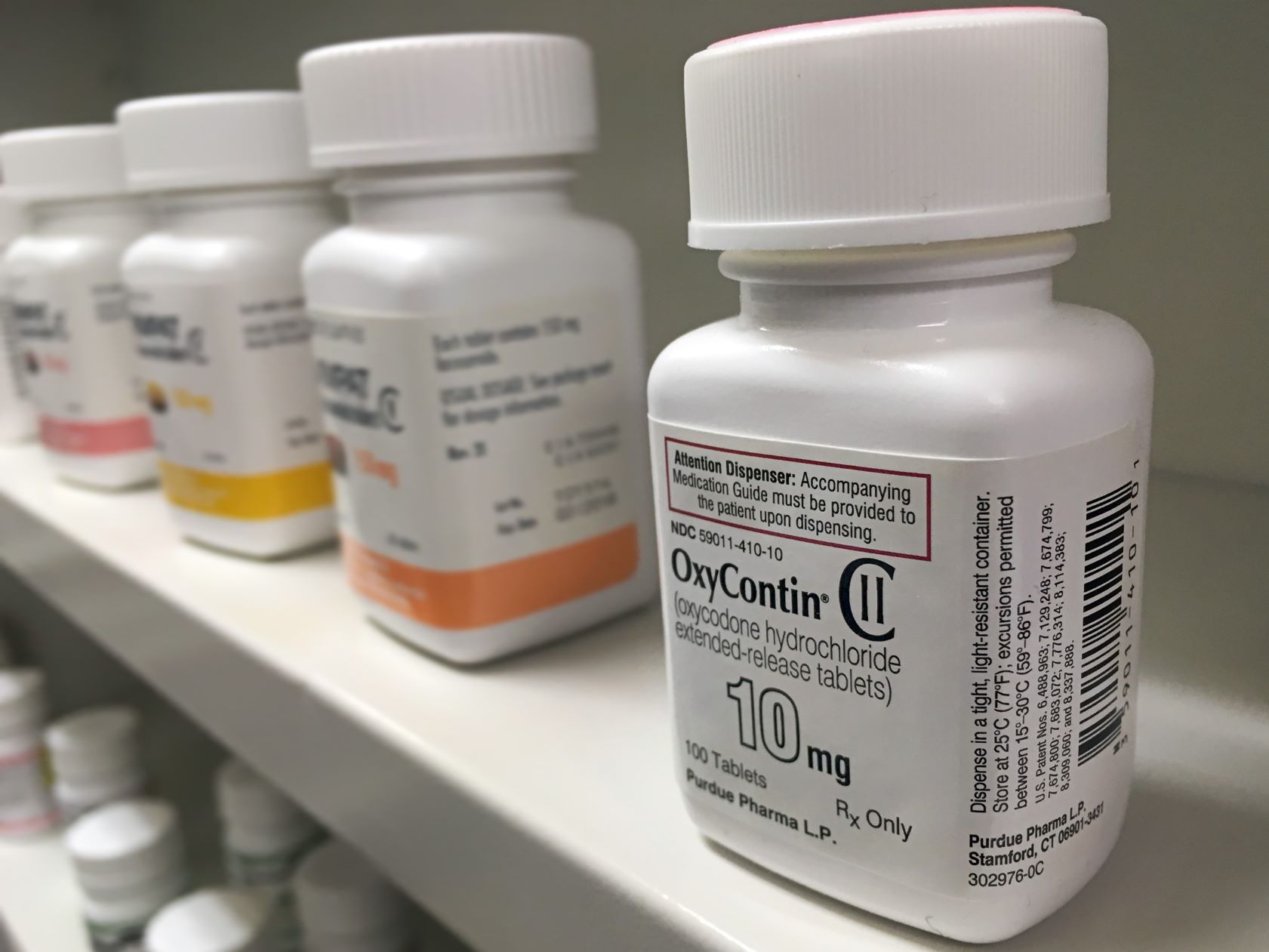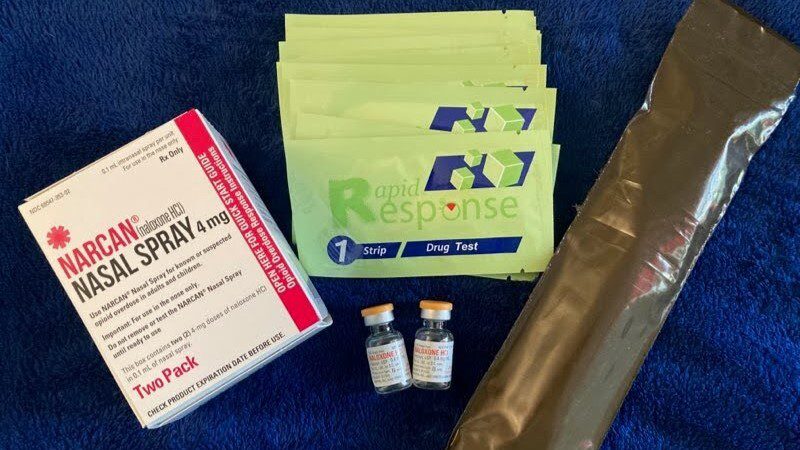Even though the overall number of drug overdoses in Washington County is down this year, the percentage of overdoses in the county that were fatal is nearly double the rate in the state, according to official data through July 2023.
Experts battling the opioid epidemic point to a number of factors, including Washington County’s rural geography and EMS staffing shortages, the increasing use of fentanyl, and a lack of familiarity with naloxone, an overdose reversal drug, as reasons for the deadly outcomes.
“It’s too many people not calling 9-1-1 soon enough,” said Gordon Smith, the state’s director of opioid response, during a presentation to the Sunrise Senior College in late June.
“It’s too many people using alone. In the rural areas, it’s just more difficult to get people where they are. If you have an overdose on Congress Street in Portland, a bystander will likely assist, and the likelihood that you will survive the overdose is overwhelming.”
Overall, the county recorded 114 overdoses from January through July 2023, with 99 of those nonfatal. That’s a lower number than the 221 total overdoses recorded in 2022.
But experts also focus on the number of fatal overdoses — that is, how many people die from an overdose. That number is down statewide, with the percent of fatal overdoses for the state — which averaged 7% for 2022 — declining to 6.6% during the period from January through July 2023.
That’s not the case for Washington County, however, where 13.2% of overdoses were fatal from January through July, compared with 10.8% of overdoses that were fatal last year. The figures involved are relatively small, and a string of even a few fatal overdoses can skew the numbers — but the increase highlights the county’s ongoing struggles.
A major factor is nearly every fatal overdose is fentanyl, which has been increasingly found in the state’s illegal drug supply.
Fifty times more potent than heroin, fentanyl was present in 80% of fatal overdoses in 2022, owing to how quickly it can cause breathing rates to slow or stop. In rural areas like Washington County, the travel time of first responders means they could arrive too late to administer life-saving treatment.
“People have used and misused substances since the advent of mankind. What’s really different today is how lethal these substances are,” Smith said.
Stemming the rate of fatal overdoses when contaminants such as fentanyl and relative newcomer xylazine — an animal sedative — are involved is a tall order. For Smith and his colleagues, it involves addressing the opioid epidemic from multiple fronts, including preventive education as early as Pre K, reducing and removing stigma, providing more access to treatment and recovery facilities and creating pathways for employment.
Despite the increased rate of fatal overdoses in the county, there are many reasons for optimism. One comes in the form of $3.6 million in potential state funding for a 10 bed treatment facility, outlined in the governor’s 2024-25 budget. It would be the first in the county, as only a recovery bed facility is currently available — and only to women and their children.
The funds have not been allocated yet, however, and the guidelines stipulate that they’re to be dispensed by the Department of Health and Human Services to either Washington or Kennebec county.
Since releasing the budget, the governor said at the July 20 Opioid Response Summit that she supports treatment facilities in both counties and indicated that funds from the opioid settlement may be directed to that effect, but no further commitments have been made.
Aside from the prospect of a new treatment facility, Smith points to programs designed and operated by organizations and institutions in Washington County, noting their innovative and enthusiastic approaches to addressing the opioid epidemic while at the same time boosting the local economy.

A workforce in recovery
Along with its overdose problem, Washington County has a workforce participation problem.
The rate of workforce participation in the county is the second lowest in the state at 52.5%, leaving about 3,000 individuals of working age who are not employed, self employed or looking for employment, according to state data.
“We have 3,000 people who think they will never be hired,” Smith said during the presentation.
The number of open positions in the county isn’t enough to accommodate the number of missing workers, with 45.6 job vacancies per 1,000 people in Washington County, according to data from the Maine Economic and Workforce Advancement Research Institute based out of the University of Maine.
Still, with 31,437 people in the county, according to the U.S. Census figures, that equates to approximately 1,414 open positions.
Noting that up to 75% of people with substance use disorders (SUDs) recover successfully, mostly through medication assisted treatment, Smith pointed to the importance of employers being willing to overlook black marks in the past when it comes to employment and criminal records. As many as 80% of prisoners at any given time have an SUD, indicating how frequently people who face criminal charges also struggle with addiction.
Too often, the impact of having both an SUD and a criminal record is enough to prevent people from attempting to gain employment at all — preventing them from accessing one of the most viable pathways to recovery.
The result plays out in the data, as the same gender and age group that is missing from the county’s workforce is the most likely to overdose. Some 75% of fatal overdoses in the state happen to men, 86% of whom are between the ages of 18 and 59.
Recognizing the need for employers to have access to resources and training to increase the number of people in recovery in the workforce, the Sunrise County Economic Council (SCEC) and the Community Caring Collaborative (CCC), both located in Machias, have launched a county specific Recovery Friendly Workplace (RFW) program.
“It nurtures the well being of our community through economic stability and through the recovery process, really recognizing that employment and meaningful career pathways are components to a rich recovery,” says Abby Frutchey, substance use response coordinator with the CCC.
The work to develop the program began in 2017, Frutchey explains, by collaborating with area organizations to see what is needed most in the region. One of the primary suggestions was to focus on employers and provide training on supporting employees in sustained recovery, supporting family members of people with SUDs, hiring people with a justice background and removing stigma associated with drug addiction.
“It’s a substance use response through an economic lens,” Frutchey said, adding that the idea is to reduce risk by supporting access to employment opportunities.
In 2020, the Maine Community Foundation provided funds for the pilot program of the Washington County RFW initiative, and in 2021 the work began. A team of human resource professionals, business managers, recovery coaches, clinical counselors and the Department of Labor worked for six months to develop the program, designing multiple trainings for employers of all sizes and strengthening the network of available resources.
Since a soft launching, the program has been well received by area businesses, many of which have scheduled training. Frutchey says the program has led to good results, with one business reaching out to thank her for the training, as it influenced their decision to hire an employee whom they “may have overlooked” otherwise, and that “it was a really great fit.”
For the first year, the goal of the Washington County RFW program is to bring 25 employers on board, increasing to 30 total sites in year two, with five of those serving as mentor sites, Frutchey noted. From there, the program will be looking to grow at a rate of five employers per year.
The state is in the midst of establishing a coalition of hubs of RFWs, with Washington County’s serving as a model in some cases. The RFWs will operate independently as part of the Pine Tree Institute.
Counselors in training fill classes
Before a person in recovery can be employed, they need to make it to that first step — and recognize that they need to recover. It’s a difficult step for many, with only 10% of users in the state seeking help, according to Smith.
“It’s because of when they have been treated like garbage,” he said, referencing how often people with addictions are treated poorly or shamed.
That’s where counselors and recovery coaches come in — and classes and trainings are being filled consistently at Washington County Community College (WCCC).
Recognizing the need in the area, WCCC initially ran two cohorts of classes designed to prepare students to complete the state licensing exam to become a certified alcohol and drug counselor at no cost to the student, explained Tyler Stoldt, dean of enrollment management and student services at the community college. The two cohorts, one that finished in July 2021 and one that finished in January 2022, had 75 students complete the course.
The classes have since been combined into a Substance Use and Recovery certificate program, which students can receive state and federal grants for. Interest remains high, with 28 students enrolled for the certificate this fall to earn their certified alcohol and drug counselor certificate and 23 enrolled in advanced classes under the Health and Human Services Associate degree program to earn their licensed alcohol and drug counselor qualification.
In addition to offering classes, WCCC embraces its role as a recovery ready campus. Recovery coaches populate the school staff, and private rooms are available for students who wish to meet one on one at any time, Stoldt says.
School employees are trained by CCC and other organizations to recognize and support students who may be struggling with an SUD. “Any student who self identifies as in recovery at any stage is encouraged and welcome to participate in campus recovery programming,” Stoldt said.
Both the classes and the recovery ready campus are important, Stoldt said, “because we believe that successfully earning a college credential can be life changing for the students we serve.”
Noting that “individuals in recovery who have access to college courses are far less likely to become reinvolved or involved for the first time with the justice system,” he added, “They are also better equipped to play productive and positive roles within their communities, which is important for all of us Downeast and across the state.”







